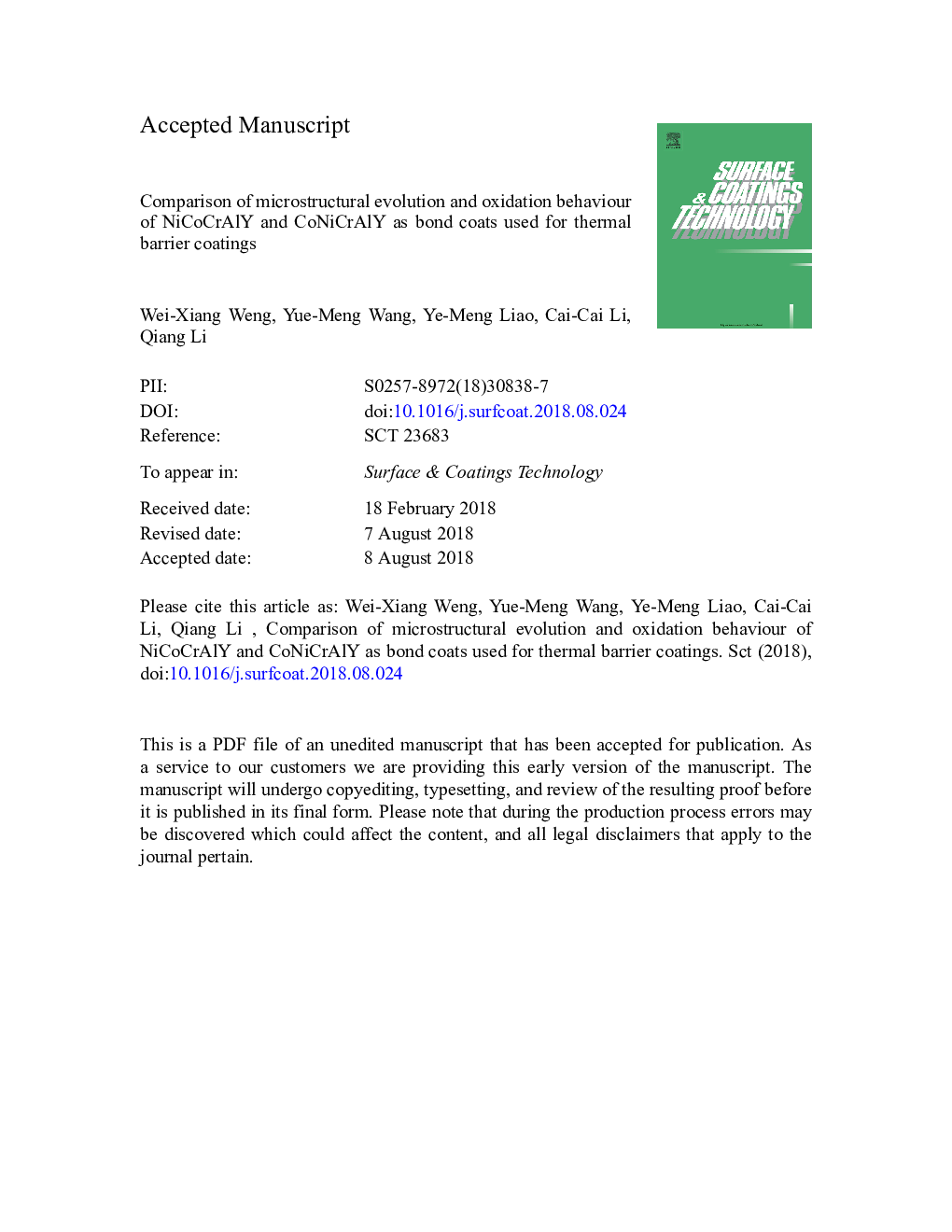| Article ID | Journal | Published Year | Pages | File Type |
|---|---|---|---|---|
| 8023203 | Surface and Coatings Technology | 2018 | 31 Pages |
Abstract
NiCoCrAlY and CoNiCrAlY bond coats used for thermal barrier coatings, as well as 8â¯wt% Y2O3-stabilized ZrO2 (8YSZ) ceramic top coat, were air plasma sprayed on Inconel 718 superalloy and then subjected to thermal exposure at 950, 1050â¯Â°C in air. The microstructural evolution and oxidation behaviour of bond coats were comparatively studied using scanning electron microscopy (SEM) and energy dispersive spectroscopy (EDS). The results show that the diffusion of Al is the key factor causing the microstructural changes, resulting in three zones in the bond coats: outer β-depleted zone (OBDZ), inner β-depleted zone (IBDZ) and β-left zone (BLZ). The thickness of BLZ decreases with the increasing of the heating time or temperature. NiCoCrAlY bond coat with higher Al content presents lower β-depletion rate and smaller Al interdiffusion coefficient, and the oxide scale is predominantly composed of Al2O3 whereas in the CoNiCrAlY coating, large amount of non alpha-alumina oxides have been found, resulting in the larger oxidation constant at the stable oxidation period and higher micro-crack density at the 8YSZ/TGO interface and 8YSZ coating. The results reveal that NiCoCrAlY bond coat presents better characteristics of oxidation resistance and crack resistance when used for thermal barrier coatings.
Related Topics
Physical Sciences and Engineering
Materials Science
Nanotechnology
Authors
Wei-Xiang Weng, Yue-Meng Wang, Ye-Meng Liao, Cai-Cai Li, Qiang Li,
